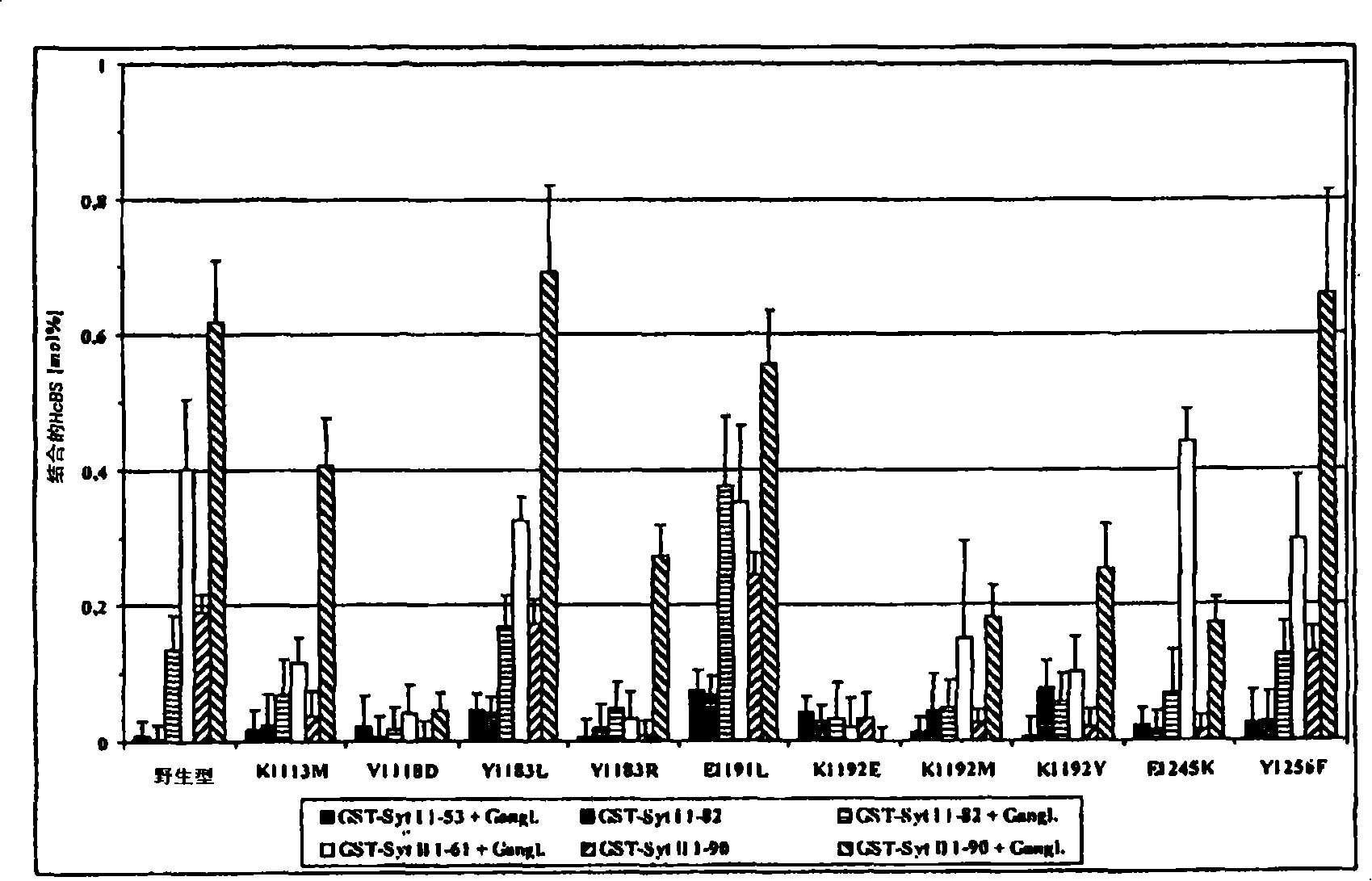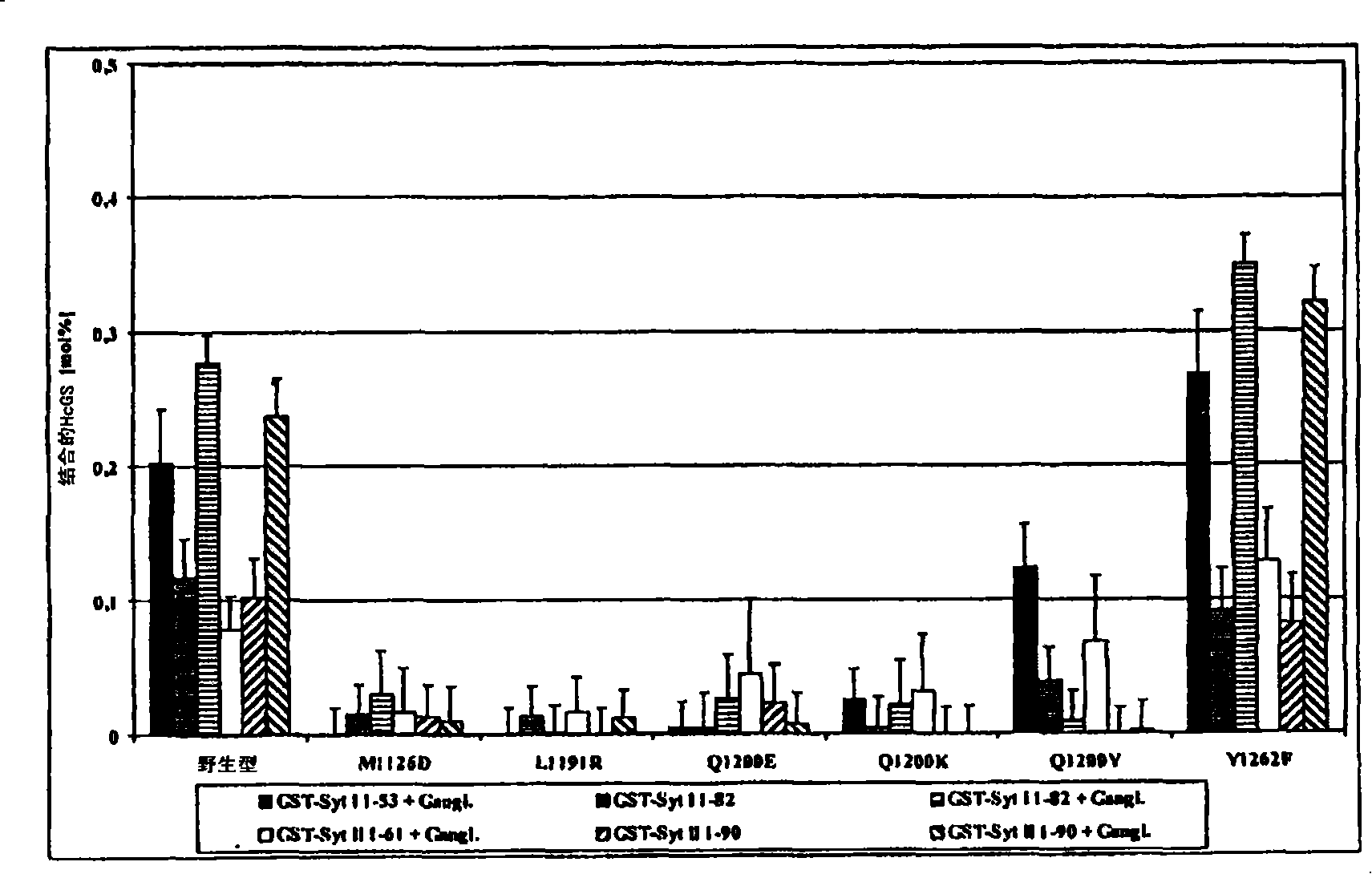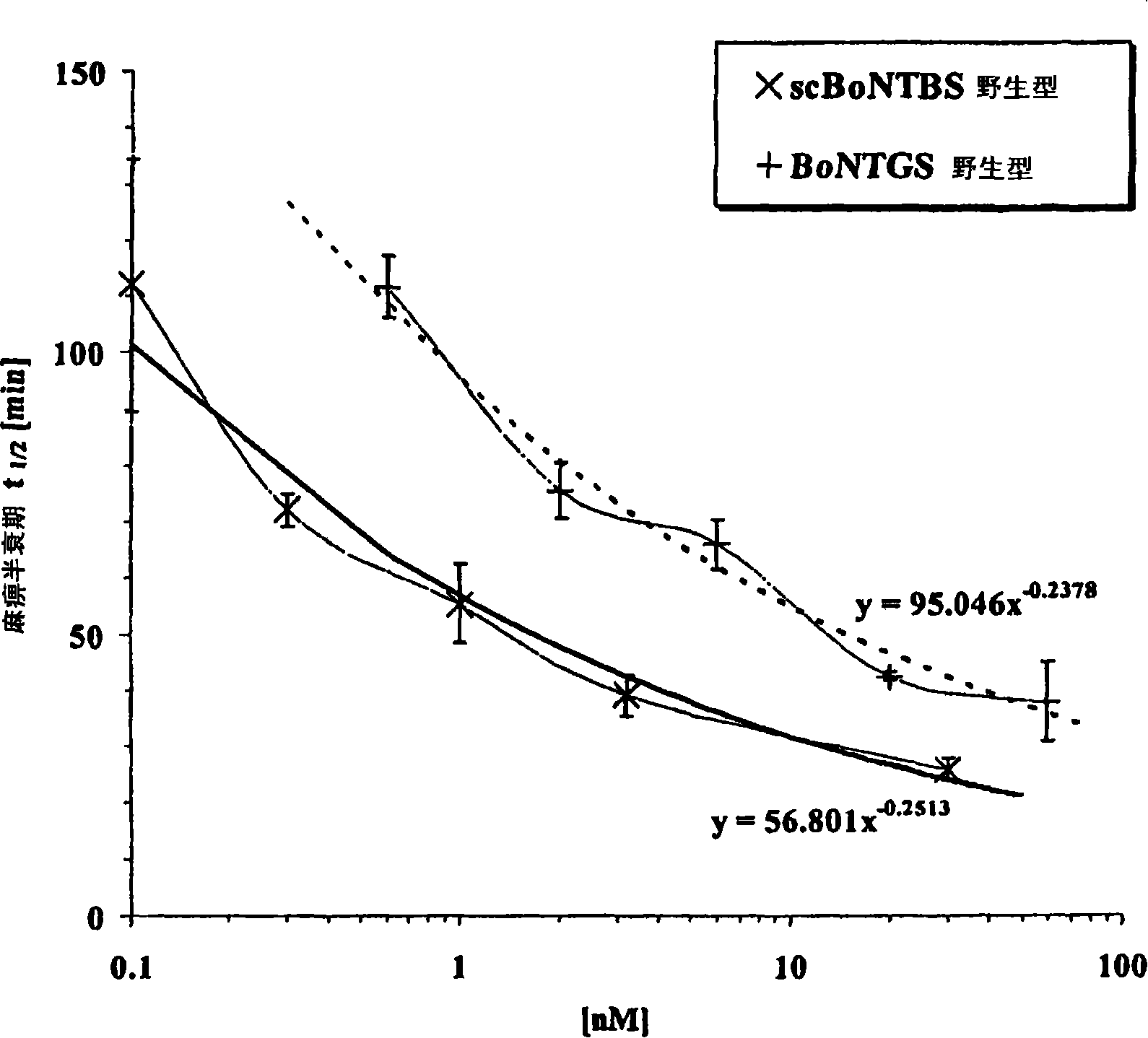Carrier for targeting nerve cells
A technology of nerve cells and neurotoxins, applied in the field of transporters, which can solve the problem of not revealing amino acids and so on
- Summary
- Abstract
- Description
- Claims
- Application Information
AI Technical Summary
Problems solved by technology
Method used
Image
Examples
Embodiment Construction
[0076] Specifically, the present invention contains a transporter protein (Trapo), which is formed by modifying the HC of the neurotoxin produced by Clostridium botulinum, and preferably specifically binds to neurons, preferably through receptor-mediated endocytosis Intracellularly taken up and translocated from the acidic endosomal compartment into the neuronal cytoplasm. This protein is used as a transporter to introduce proteases and other substances bound to the transporter and unable to physiologically penetrate the cell membrane and reach the cytoplasmic fluid of nerve cells into cells. The substrates of this protease are proteins and polypeptides localized in cells involved in the release of neurotransmitters. After the substrate is dissociated, specific functions of the neuron are blocked; however, the cell itself is not damaged. One of these functions is exocytosis resulting in the release of neurotransmitters. If transmitter release is inhibited, signaling from cel...
PUM
 Login to View More
Login to View More Abstract
Description
Claims
Application Information
 Login to View More
Login to View More - R&D
- Intellectual Property
- Life Sciences
- Materials
- Tech Scout
- Unparalleled Data Quality
- Higher Quality Content
- 60% Fewer Hallucinations
Browse by: Latest US Patents, China's latest patents, Technical Efficacy Thesaurus, Application Domain, Technology Topic, Popular Technical Reports.
© 2025 PatSnap. All rights reserved.Legal|Privacy policy|Modern Slavery Act Transparency Statement|Sitemap|About US| Contact US: help@patsnap.com



